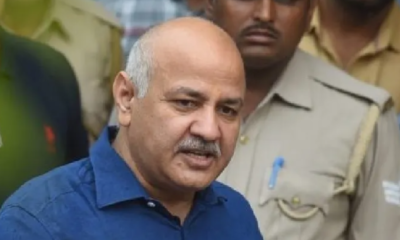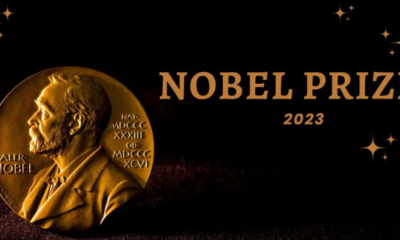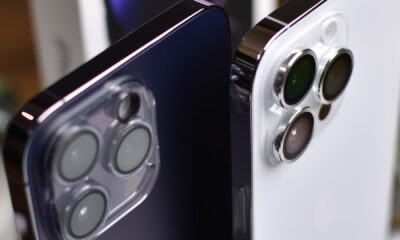Business
Ahead of iPhone 15 launch, Apple copes with China challenge

[ad_1]
Apple on Tuesday is expected to unveil a new iPhone 15 lineup as questions about market access in China and competition hang over the world’s most valuable listed company.

The iPhone made up more than half of Apple’s $394.3 billion in sales last year, but it faces new challenges with selling in China, the Cupertino, California firm’s third-largest market.
Apple’s latest phones are expected to have new charging ports, titanium cases and cameras, but their debut at its Apple Park headquarters at 10 a.m. PT (1700 GMT) will come as the Chinese government has expanded some restrictions on using iPhones.
Apple will also have to grapple with competition from Huawei Technologies, which was its top rival in China’s premium smartphone market until U.S. export controls ruined Huawei’s phone business in 2019. Last week, Huawei started selling the Mate 60 Pro, a high-end phone that uses Chinese-made chips that some U.S. lawmakers believe were manufactured in violation of U.S. trade curbs.
Huawei wants to gain an edge on Apple with add-on features like satellite calling that relies on China’s government-backed network. Apple’s current iPhone lineup includes satellite capabilities, though they are meant only for emergency situations.
Apple on Tuesday is likely to focus on its new product lineup. By far the biggest change for most Apple customers will be a switch from Apple’s propriety “Lightning” charging cables to USB-C, a standard that Apple already uses on its laptops and some high-end iPads.
Apple was forced into the change by European regulations, but analysts believe that the company will position the change as an upgrade, taking advantage of faster data speeds that can transfer high-quality videos made with iPhones.
Analysts are also expecting a new “periscope” camera technology that could give phones better zoom capabilities and titanium cases, as well as upgraded chips. Such “periscope” lenses can use mirrors or prisms to get a longer lens without having to make the camera module much larger.
The biggest question of the day will be whether Apple reserves those features for a new top-end device and makes smaller upgrades to its cheaper models.
“Just like we saw people who aren’t Ultra athletes buy the Apple Watch Ultra, we’re going to see a bunch of people buy this even if they aren’t camera or photography enthusiasts, just because they like the latest and greatest,” said Ben Bajarin, chief executive and principal analyst of Creative Strategies. “That by itself creates that buzz and momentum and allure to the top end.”
Apple is expected to increase the average price per phone sold to boost its revenue, but the question is whether it does that by raising prices across the board or just on premium versions. The global smartphone market has slumped from shipping 294.5 million total phones to 268 million in the second quarter, but Apple’s shipments declined the least of any major smartphone maker, dropping from 46.5 million phones to 45.3 million, according to data from Counterpoint Research.
“The truth of the matter is, we’re in a very down smartphone market,” said Bob O’Donnell, head of TECHnalysis Research.
O’Donnell said he will also be on the lookout for any hints about Apple’s plans with what is known as generative artificial intelligence, the technology trend behind applications like OpenAI’s ChatGPT and Microsoft’s “Copilot” assistant technologies for its Office software.
Analysts have repeatedly prodded Apple about its plans for such technology but the company has given few hints so far, other than Chief Executive Tim Cook’s comments in July that the company’s secret work on the technology is driving up its research spending.
“Will Apple tease an advanced form of Siri? That would be something that would generate some excitement,” O’Donnell said.
Business
Biden’s Hollywood Break-Up: Celebrities Say It’s Time for a Change

As President Joe Biden nears the halfway mark of his term, a noticeable shift is occurring within Hollywood’s elite. Once a stronghold of Democratic support, a growing number of celebrities are voicing their discontent with the current administration and calling for a change in leadership.
The Growing Discontent
Policy Disagreements:Many celebrities have expressed frustration over Biden’s handling of key issues such as climate change, healthcare, and immigration. Despite campaign promises, some feel that progress has been too slow or insufficient.
Environmental advocates, in particular, have been vocal about their disappointment with the administration’s compromises on climate policy, arguing that urgent action is needed to address the climate crisis.
Cultural and Social Issues:Hollywood’s progressive base has criticized Biden for not taking a stronger stance on social justice issues. High-profile figures in the entertainment industry have called for more aggressive reforms on policing, racial equality, and LGBTQ+ rights.
The Supreme Court’s recent decisions on reproductive rights have also fueled discontent, with many feeling that the administration should have taken more decisive action to protect these rights.
Economic Concerns:Celebrities have highlighted economic disparities and the administration’s handling of the post-pandemic recovery. Rising inflation and economic instability have led some to question Biden’s economic policies and their impact on everyday Americans.
The entertainment industry itself has faced challenges, including strikes and disputes over working conditions, which some feel have not been adequately addressed by the administration.
Calls for Change New Leadership:Prominent figures in Hollywood are advocating for new leadership within the Democratic Party, suggesting that fresh faces and ideas are needed to address the current political and social climate.
Some celebrities have even hinted at support for potential challengers within the party who might better align with their progressive values and vision for the future.
Increased Activism:The dissatisfaction has led to increased political activism among celebrities, with many using their platforms to mobilize fans and encourage voter participation. Grassroots campaigns and advocacy efforts are gaining momentum as celebrities push for change.
Social media has become a powerful tool for these efforts, allowing celebrities to reach wide audiences and galvanize support for various causes and candidates.
Impact on Upcoming Elections
Influence on Voters:Hollywood celebrities have long held sway over public opinion, and their shift in support could influence voters, especially younger demographics who look up to these figures.The growing call for change may lead to a more dynamic and competitive Democratic primary, potentially reshaping the party’s platform and priorities.
Republican Opportunities:The discontent within Hollywood could also present opportunities for Republican candidates to appeal to disillusioned voters. By addressing key issues and presenting viable alternatives, Republicans may seek to capitalize on the divide within the Democratic base.
Conclusion
The evolving relationship between Hollywood and the Biden administration highlights the complexities of political alliances and the changing landscape of American politics. As celebrities increasingly voice their desire for change, their influence could play a significant role in shaping the future of the Democratic Party and the broader political discourse in the United States.
Business
The Shift from Celebrity Endorsements to Influencer Marketing

In recent years, the marketing landscape has witnessed a significant shift from traditional celebrity endorsements to influencer marketing. This evolution is driven by changes in consumer behavior, the rise of social media, and the need for more authentic and relatable brand connections.
Why the Shift is Happening
Authenticity and Relatability:Consumers increasingly seek genuine and relatable recommendations. Influencers, who often share personal stories and experiences, provide a sense of authenticity that traditional celebrity endorsements sometimes lack.
Influencers typically have a niche audience that trusts their opinions, making their endorsements feel more like personal recommendations than paid promotions.
Engagement and Interaction:Influencers engage directly with their followers through comments, likes, and direct messages, creating a two-way interaction. This engagement fosters a sense of community and trust.
Celebrities, while having large followings, often maintain a more distant relationship with their audience, which can reduce the perceived authenticity of their endorsements.
Targeted Reach:Brands can leverage influencers to reach specific demographics and niches. Influencers often cater to particular interests, allowing brands to target their marketing efforts more precisely.
Celebrity endorsements, on the other hand, tend to have a broader reach but may not effectively target specific audience segments.
Cost-Effectiveness:Working with influencers, especially micro-influencers (those with smaller, highly engaged followings), can be more cost-effective than high-profile celebrity endorsements.
Brands can collaborate with multiple influencers to achieve a wide reach at a lower cost compared to a single celebrity endorsement deal.
Content Diversity:Influencers create a variety of content formats, including videos, stories, and blog posts, offering brands multiple ways to connect with their audience. This diverse content can be more engaging and shareable.
Celebrity endorsements are often limited to traditional advertising formats, which may not resonate as effectively with modern, digital-savvy consumers.
Examples of Influencer Marketing Success
Fashion and Beauty:Brands like Glossier and Fashion Nova have leveraged influencers to build their brands. Influencers’ reviews, tutorials, and unboxing videos have driven significant brand awareness and sales.
Travel and Lifestyle:Companies like Airbnb and GoPro collaborate with travel influencers to showcase their products in real-life scenarios. Influencer-generated content highlights authentic travel experiences and inspires followers.
Fitness and Wellness:Fitness brands such as Gymshark have grown exponentially by partnering with fitness influencers who demonstrate the use of their products, share workout routines, and motivate their followers.
Conclusion
The shift from celebrity endorsements to influencer marketing reflects a broader trend towards authenticity, engagement, and targeted reach in the digital age. While celebrities still hold significant influence, the rise of social media has democratized marketing, allowing influencers to build strong, loyal communities. Brands that adapt to this shift and leverage the power of influencer marketing can create more meaningful connections with their audience, ultimately driving greater brand loyalty and success.
Business
Virat Kohli Surpasses Shah Rukh Khan and Ranveer Singh to Become King of Celebrity Brand Value

In the ever-evolving landscape of celebrity endorsements and brand associations, Virat Kohli has achieved a significant milestone by surpassing Bollywood icons Shah Rukh Khan and Ranveer Singh to become the king of celebrity brand value in India. This accomplishment underscores Kohli’s unparalleled popularity and influence, extending beyond the cricket field to a dominant presence in the advertising and branding world.
How Celebrity Brand Value is CalculatedCelebrity brand value is a metric that evaluates the monetary worth a celebrity brings to a brand through their endorsements. The calculation of this value involves several factors:
Marketability and Endorsement Deals: The number and nature of endorsement deals a celebrity secures play a crucial role. Higher and more lucrative deals increase the brand value.
Public Perception and Popularity: Surveys and market research assess the celebrity’s popularity, likability, and public perception. Positive sentiment and a strong fan base contribute significantly to brand value.
Media Presence and Visibility: The frequency and nature of a celebrity’s appearances in media, including social media, television, and print, impact their brand value. Greater visibility often translates to higher brand value.
Social Media Influence: In today’s digital age, a celebrity’s social media presence and engagement are vital. High follower counts and interaction rates boost brand value.
Impact on Sales and Brand Image: The effectiveness of a celebrity in driving sales and enhancing a brand’s image is a direct indicator of their brand value. Brands track the performance of campaigns featuring the celebrity to gauge this impact.
Longevity and Consistency: The duration of a celebrity’s relevance and their ability to maintain consistent performance over time contribute to their overall brand value.
Virat Kohli’s ascent to the top is a testament to his exceptional marketability, vast popularity, and strategic brand associations. His strong social media presence, consistent performance as a cricketer, and charismatic personality have all played pivotal roles in elevating his brand value. By surpassing established Bollywood stars like Shah Rukh Khan and Ranveer Singh, Kohli has solidified his position as a leading figure in both sports and brand endorsements, showcasing the growing influence of athletes in the world of celebrity branding.
-

 Featured9 months ago
Featured9 months agoOnline Threats for Jewish Students in Cornell University – Flaunt Post
-

 Entertainment1 month ago
Entertainment1 month agoSamantha Gabronino, Katwalk Doll Queen, Wins Miss Freedom of the World Grand Prix Title
-

 Sports11 months ago
Sports11 months agoWATCH: Virat Kohli Shakes A Leg On ‘Lungi Dance’ Song During India Vs Sri Lanka Asia Cup 2023 Super 4 Match
-

 Featured9 months ago
Featured9 months agoSupreme Court Delays Verdict in Manish Sisodia’s Corruption Case, Legal Battle Continues – Flaunt Post
-

 Featured10 months ago
Featured10 months agoNobel Prize 2023: Celebrating Outstanding Achievements in Science, Medicine, and Literature – Flaunt Post
-

 Entertainment10 months ago
Entertainment10 months agoOne Piece Live-Action Series Sparks Hilarity and Spice in Netflix’s Fan-Fueled Promotions – Flaunt Post
-

 Featured3 months ago
Featured3 months agoSerena Novikov: Modeling Success in the Digital World
-

 Featured9 months ago
Featured9 months agoWarning for increased terror threat by FBI director – Flaunt Post


